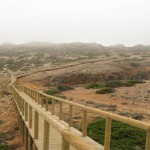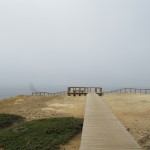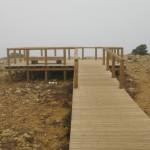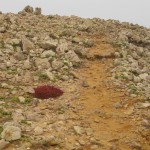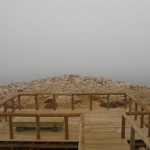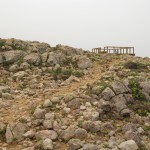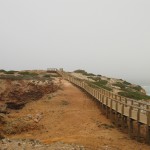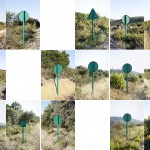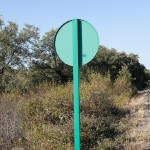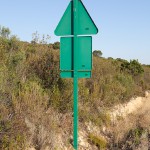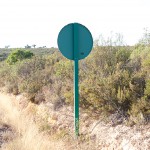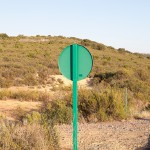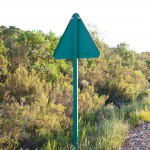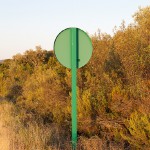Espacio Natural Protegido (ENP)
PNS. Protected Natural Space. 2009
The series PNS present a reflection on the world around us, and the way our knowledge of it is constructed. It offers a reading of the landscape in semiotic terms, in which environmental protection policies favour conservation but at the same time generate structures of meaning that distort our perception of the environment.
The photographs in this series record various natural spaces in which a system of signification and reappraisal of the land has been activated. By its mere presence, this system highlights certain qualities that – though not always visible – are linked to the imagery associated with environmental conservation.
In addition to being an idiosyncratic local presence, each of these spaces goes on to form part of a complex administrative network where it is governed by Conventions, Agreements, Treaties, Catalogues, Strategies and Guidelines drawn up with a view to designing, protecting, administrating, organising, enhancing and publicising its unique qualities in a uniform, generic manner.
Environmental conservation policies install in natural spaces their own repertoire of symbols, which subsequently interact with the existing landscape. A new layer of information is superimposed as a complement to earlier layers in order to stress the unique character of the space that is to be observed, conserved, publicised, etc. The visibility and iconography of this system distort our perception of the existing territory; and its presence – over and above informative intentions – conveys environmental and landscape qualities. Brought into play by this system of signification is a whole structure of codes and meanings that highlight abstract attributes such as “unspoilt, prized, representative, singular”, and draw attention to distinctive features in terms of flora, fauna, geological formations, watercourses or other natural elements.
Our perception of the land has traditionally been shaped by the cultural conventions prevailing at different times and in different places. Of late, however, our way of seeing the environment has undergone a major change – a shift from discovery to recognition – so much so, that an unspoilt gaze is no longer possible.
As a result, we look at the landscape through a wide range of predetermined categories, and can only see what we already know.

